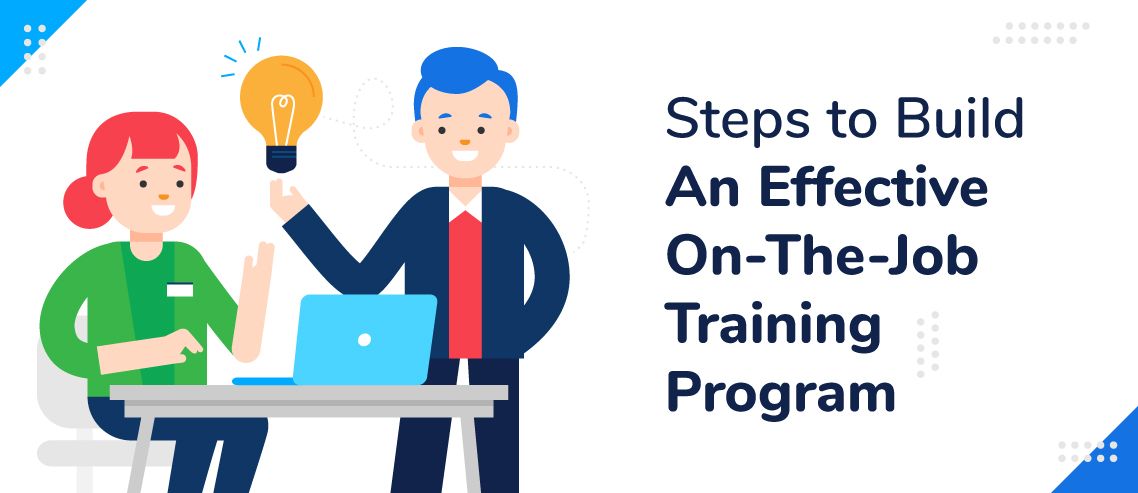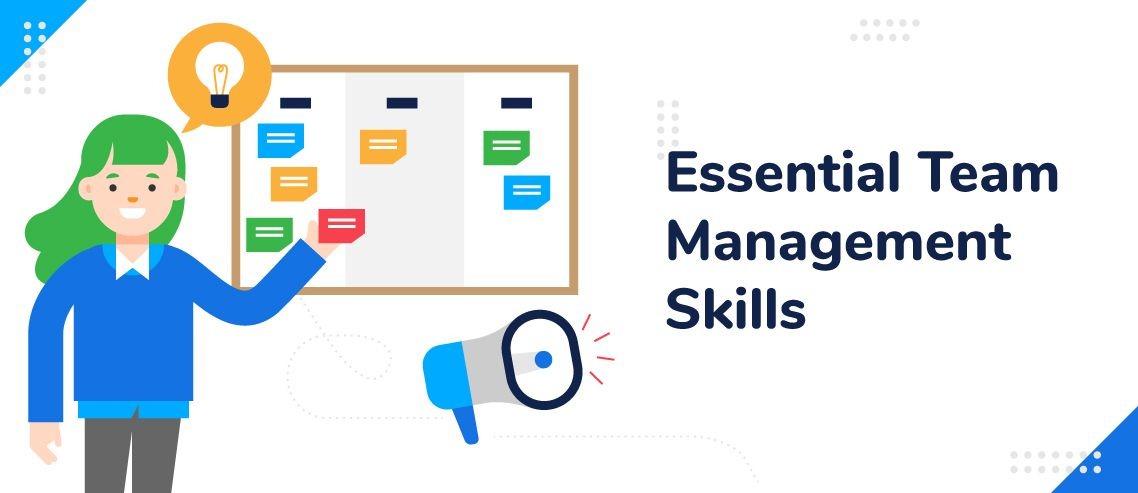10 Steps To Build An Effective On-The-Job Training Program

On-the-job training is a vital aspect of the onboarding and upskilling process within any company. Ensuring that new hires are able to competently perform their role benefits both the employee and the business’s bottom line.
Indeed, 40% of employees who receive poor or no on-the-job training leave their role within their first year of employment. As we all know, churning employees in their first year comes at a huge cost to businesses.
On-the-job training enables employees to learn while they integrate into their work environment, using company people and resources.
A good on-the-job training program creates a flexible talent pool within the business, brimming with promotable employees. It also makes you look like a fantastic company to work for during the hiring process. And who doesn’t want that?
Here’s how to build an effective on-the-job training program:
1. Research
You can’t just jump into building your training program without doing a bit of research first.
That’s because you need to find out exactly what employees in certain roles need to know. As a business leader or senior manager, you might have great oversight of the business as a whole, but you probably don’t have a deep understanding of all the roles within your organization on a day-to-day level.
Consult with people experienced in the roles you’re researching. Consider shadowing them for a day, noting down all the skills they use throughout the day, as well as things like the software they use and the people they interact with.
2. Define Your Training Needs
Now that you’ve done your research, it’s time to define your needs. This part is pivotal.
Write down exactly what employees need to know to succeed in the role you’re developing on-the-job training for. Break it down, step-by-step: the more specific, the better.
Consider the following:
● What software do they need to learn?
● Which colleagues do they need to be introduced to?
● What concepts do they need to wrap their brain around?
● What goals and objectives do they need to be made aware of?
3. What Training Is Going to Meet Those Needs?
This is the part where you fill in the blanks.
Go down your list of needs and brainstorm exactly what sort of training your employees will need to be able to perform every step of their role to a high standard.
Create a spreadsheet containing your list of required training in chronological order. As you work down the rest of the steps in this guide, gradually add the details.
Think about a timeline: what training will they need on day 1, and which can be introduced down the line? You don’t want to overwhelm them, but it’s important that they can competently perform each task they are assigned whenever they are assigned them.
4. What Training Methods Will You Use?
You’ve no doubt got your tried and tested training methods in-house, but take a second to think about what will be most effective when it comes to on-the-job training. Don’t be afraid to break the mold.
Are you going to provide a full syllabus of face-to-face training? Or are you going to mix in some online modules? Is the training going to be formal and assessed, or informal and creative?
In addition to thinking about the information this training needs to convey, consider employee engagement as well. How are you going to imbue the training with a sense of enjoyment or fun to ensure they absorb the information?

5. What Resources and Materials Will You Need?
Now that you have your training methods nailed down, list the resources and materials you’ll need to carry them out effectively.
While some of these will likely be external – such as books and software – others will need to be created internally if they don’t already exist.
Ask your marketing and communications teams to help you create these learning materials, and, where appropriate, to inject an element of fun. For example, certain parts of the training could include prizes, or awards could be given out upon its completion.
Don’t forget to work out how much the resources will cost you in order to budget effectively. Consider how often this training will need to be carried out, how many of the resources are a one-off cost, and which you’ll need to pay for with every round of training.
6. Who Is Best Placed to Carry out the Training?
Do you need to hire a learning and development officer to carry out this training? Are you going to use current in-house experts to provide training?
If the latter is true, will they need training on L&D? Remember, just because someone is good at their role doesn’t automatically make them an expert educator.
Be sure to also consider how you’ll account for the time they lose from their capacity to carry out their own role. This is a hidden cost that’s important to incorporate into your plans. In addition, they may not always be free to take on the task of on-the-job training whenever you need them to.
If you’re going to need the services of an external trainer, do you have a budget for this? This applies both to the training of the employees going through your on-the-job training program and the training of your on-the-job trainers.
7. Design What Your On-The-Job Training Program Will Look Like, Step-By-Step
It’s time to flesh out your program and see your concept take real-world shape. Look at the user journey your trainees will take, and get it down on paper step-by-step.
This will enable you to identify and plug any gaps in your plan. Remember, it’s not too late to change and adapt your program at this point – in fact, that’s the point of this exercise.
Look at the plan from the trainers’ point of view too. How much time is it going to take them? Will they have any conflicting responsibilities?
8. Build an Implementation Plan
Sit down with your management team and figure out an implementation plan.
This should include aspects such as:
○ Are you going to beta test your program first, and with who?
○ Introducing your plan to the trainers and coordinators involved
○ How to present the program positively throughout the company
○ How to ensure employees are engaged with the program
○ The start date and the first review date
Including your management team at this stage is crucial – they’ll be able to spot any issues with your plan that you may have been blind to.
9. Roll Out
This is the exciting part: you’ve worked hard to build your plan, and now you get to see it come to life.
Carry out your implementation plan and let your training program fly.
10. Gather Feedback and Adapt
No program is perfect – especially at the beginning. Problems here are to be expected: they don’t mean you’ve failed. It’s how you respond to these issues that will determine the success of your program.
Regular reviews are essential for the success of any on-the-job training program. The hard part is actually sticking to your reviews, so decide ahead of time when your first review will take place, and calendar in all the consultations, assessments, and meetings that need to take place ahead of time.
Once you’ve gathered the quantitative (test results) and qualitative (interviews) data, adjust your program accordingly. Rinse and repeat, continuing to finesse your plan over the years.
Have you seen success with an on-the-job training program? Tell us about it in the comments.
JD enjoys teaching people how to use ZoomShift to save time spent on scheduling. He’s curious, likes learning new things everyday and playing the guitar (although it’s a work in progress).



